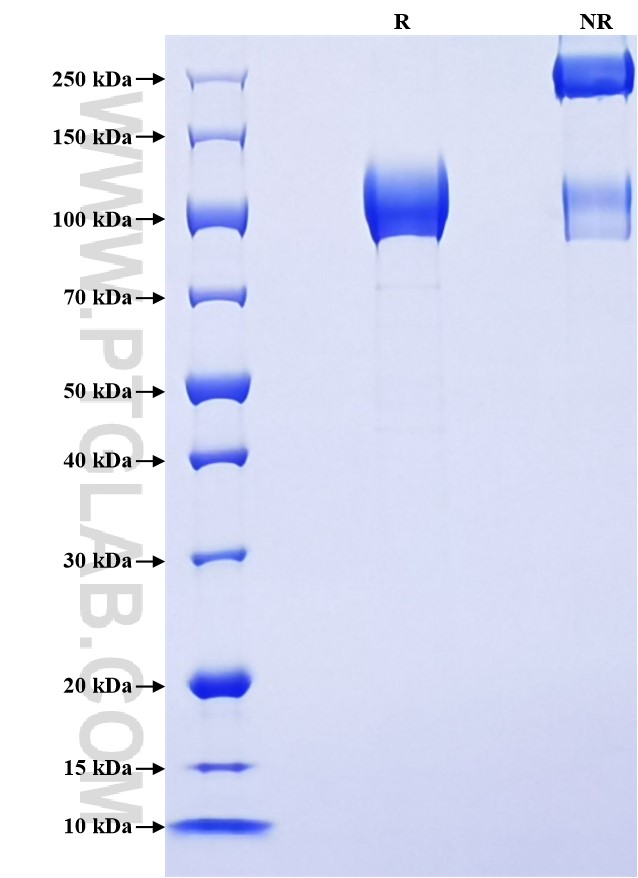Recombinant Mouse CSF1R protein (rFc Tag)
种属
Mouse
纯度
>90 %, SDS-PAGE
标签
rFc Tag
生物活性
未测试
验证数据展示
产品信息
| 纯度 | >90 %, SDS-PAGE |
| 内毒素 | <0.1 EU/μg protein, LAL method |
| 生物活性 |
Not tested |
| 来源 | HEK293-derived Mouse CSF1R protein Ala20-Ser511 (Accession# P09581) with a rabbit IgG Fc tag at the C-terminus. |
| 基因ID | 12978 |
| 蛋白编号 | P09581 |
| 预测分子量 | 81.5 kDa |
| SDS-PAGE | 90-130kDa, reducing (R) conditions |
| 组分 | Lyophilized from 0.22 μm filtered solution in PBS, pH 7.4. Normally 5% trehalose and 5% mannitol are added as protectants before lyophilization. |
| 复溶 | Briefly centrifuge the tube before opening. Reconstitute at 0.1-0.5 mg/mL in sterile water. |
| 储存条件 |
It is recommended that the protein be aliquoted for optimal storage. Avoid repeated freeze-thaw cycles.
|
| 运输条件 | The product is shipped at ambient temperature. Upon receipt, store it immediately at the recommended temperature. |
背景信息
The CSF-1 receptor (CSF1R), also called CD115, is activated by the homodimeric growth factors colony-stimulating factor-1 (CSF-1) and interleukin-34 (IL-34). It plays important roles in development and in innate immunity by regulating the development of most tissue macrophages and osteoclasts, of Langerhans cells of the skin, of Paneth cells of the small intestine, and of brain microglia. It also regulates the differentiation of neural progenitor cells and controls functions of oocytes and trophoblastic cells in the female reproductive tract. Owing to this broad tissue expression pattern, it plays a central role in neoplastic, inflammatory, and neurological diseases.
参考文献:
1. E Richard Stanley, Violeta Chitu. (2014) Cold Spring Harb Perspect Biol. Jun 2;6(6):a021857. 2. Haishan Lin, et al. (2008) Science. May 9;320(5877):807-11. 3. David A Hume, Kelli P A MacDonald. (2012) Blood. Feb 23;119(8):1810-20. 4. Violeta Chitu, E Richard Stanley. (2006) Curr Opin Immunol. Feb;18(1):39-48.


